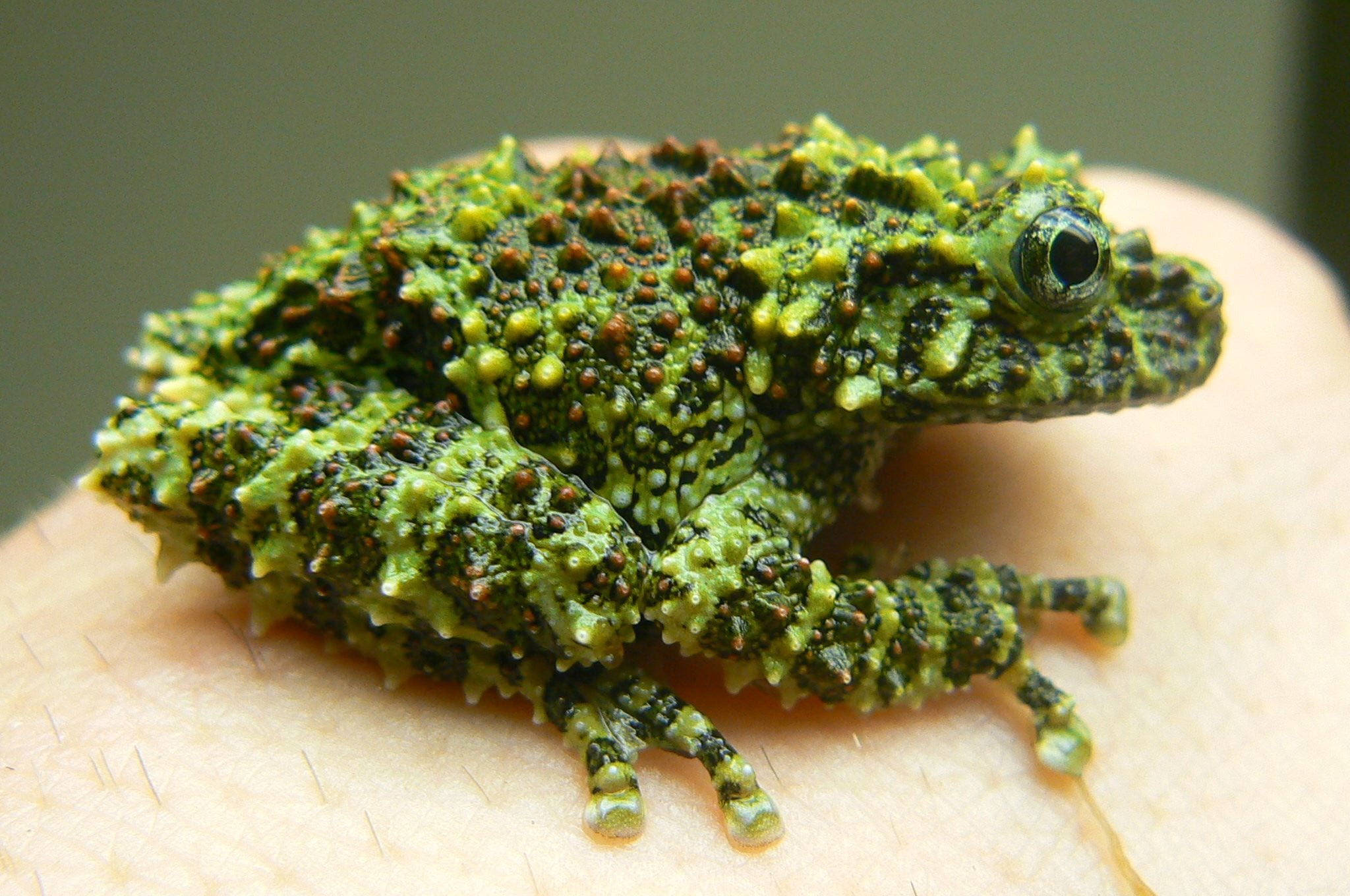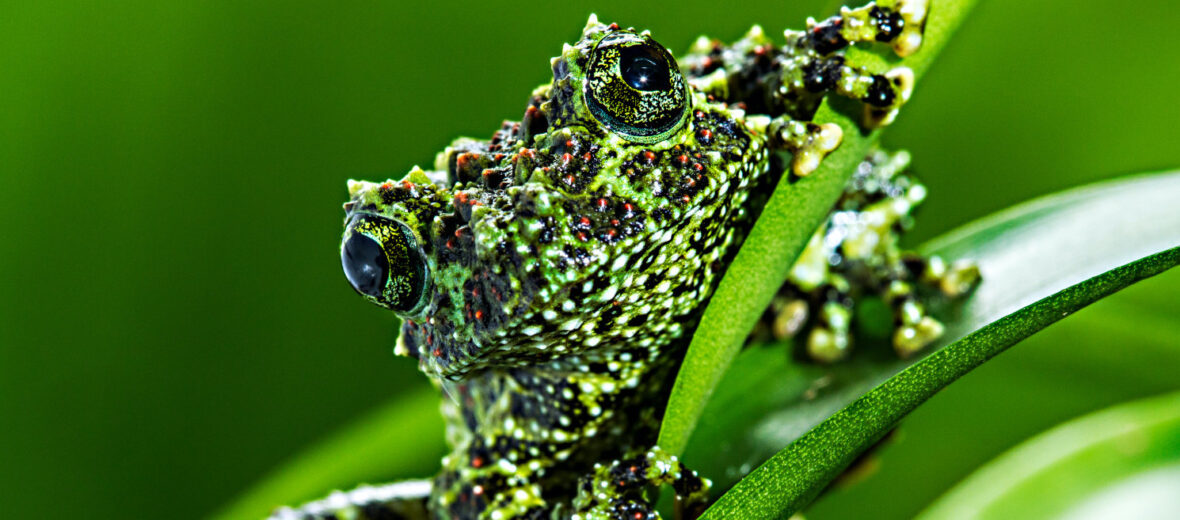In the lush, humid forests of Southeast Asia, one of nature’s most remarkable masters of disguise thrives: the Theloderma corticale, commonly known as the mossy frog. This extraordinary amphibian captivates researchers and nature enthusiasts alike with its incredible camouflage and unique adaptations that allow it to blend seamlessly into its environment.
The rough, bumpy texture of its skin not only enhances its camouflage but also aids in retaining moisture, an essential feature for amphibians living in humid environments. This ability to blend into the forest floor allows the mossy frog to remain hidden while waiting for prey and avoiding detection.
Mossy frogs are primarily nocturnal, becoming active at night when they hunt for food. Their diet mainly consists of small invertebrates, including insects, spiders, and other tiny creatures. With their keen eyesight and patience, they use their camouflage to ambush unsuspecting prey that comes too close.
The reproductive habits of the mossy frog are equally fascinating. Breeding typically occurs during the rainy season when conditions are ideal. Females lay their eggs on the undersides of leaves or in moist crevices, where they are less likely to be discovered by predators. After hatching, the tadpoles drop into nearby water sources, where they continue their development.
Despite its incredible adaptations, Theloderma corticale faces several threats, including habitat destruction due to deforestation and climate change. The loss of its natural habitat not only reduces available breeding grounds but also increases vulnerability to predators. Conservation efforts are essential to protect the mossy frog and its habitat, ensuring that this remarkable species continues to thrive.